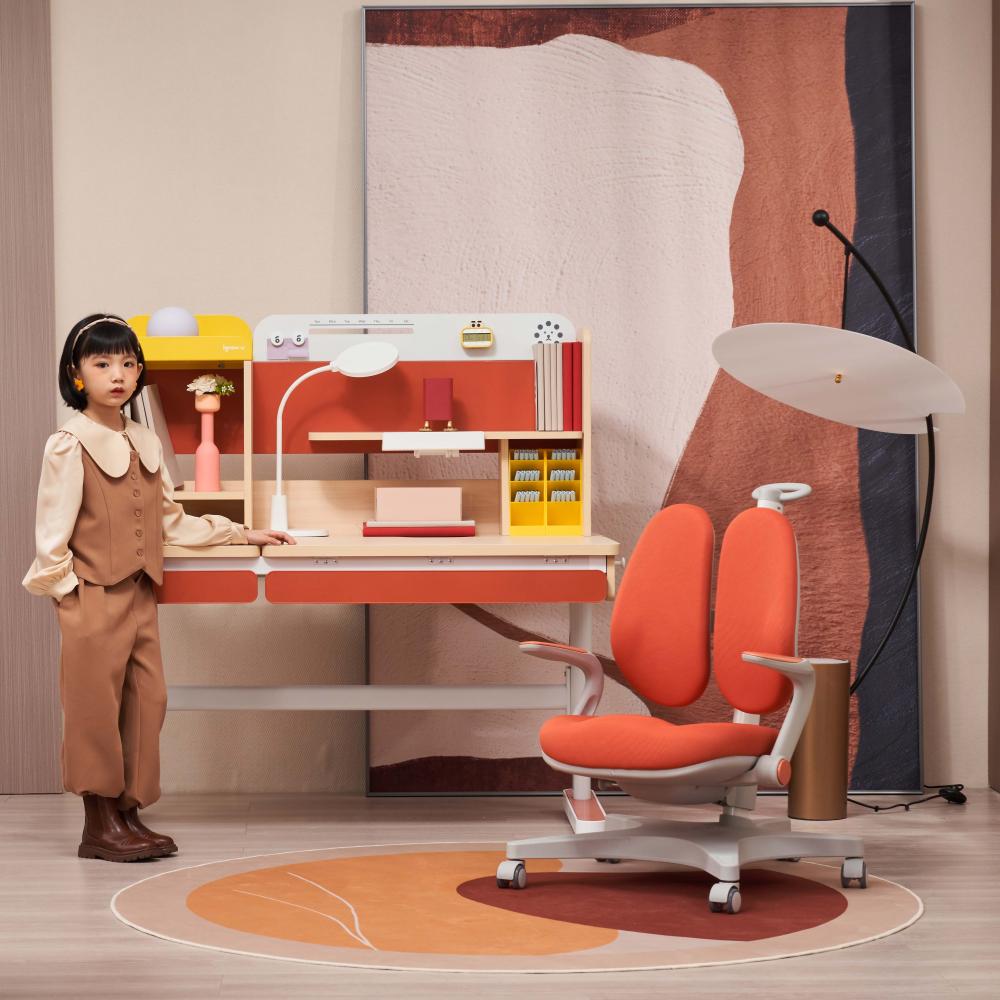The main material of the igrow student desk and chair is solid wood, the function of the seat, the seat height can be adjusted, the seat depth can also be adjusted, and the length of the table top is 110 to 120 cm. Student desks and chairs with bookshelves, with side tables, table functions can be raised and lowered, movable, and inclined. There are multiple choices of colors. The desktop angle, less than or equal to 50 degrees.
Children's study desks and chairs, plan management, study more effectively, the area of the desk is upgraded, more space is released, parents are also spacious for reading, and learning is more free. The bookshelf can be disassembled, freely movable and combined, different storage methods are not available at different school ages, and large and small objects are good Put it away, so that the storage is not limited.
For home screen printing, the tools and materials needed are simple and easy to purchase. There is no need to purchase special printing equipment. Simple tools such as: transparent tape, triangle, ruler, brush, hair dryer, electric iron, table, Soap, fluorescent lamps, glass, etc. are all commonly used products, and photosensitive adhesives used in plate making, ink pastes for printing, and rubber squeegees are sold in paint chemicals and screen printing material stores. It is also very simple to purchase raw materials for yourself. Printing screen frame can be customized with wood lines, screen cloth selection 100-120 mesh / inch for simple color blocks and 0.25MM or more lines, stretch net method: use 3X4CM mended lines set 35X45CM rectangular box, there are old The wooden frame of the window can also be directly used. The screen cloth is cut into about 10CM larger than the wooden frame on each side. After immersed in water, it is attached to the wooden frame. The plywood is cut into 2.5CM strips and the screen is pressed on the frame. On the side, first nail a nail from the middle (without the plywood with a thumbtack), then tighten one nail with a nail, tighten the other nail in turn, and then from the other side of this side, wrap the screen. On the plywood board, use the plywood to invert the stretched wire mesh on the frame. Note that the plywood strip should be smaller than the outer frame equal to the inner diameter of the frame to prevent excessive breaking of the four corners of the force. Meanly, the mesh should be evenly affixed to the mesh frame, and then be nailed. Tighten the other two sides of the screen and tighten it. There is a gravity nail gun to make it more convenient or to buy a good finished net frame in the screen printing shop.
The materials required for screen production are photosensitive emulsions (commonly known as photosensitive adhesives): they are composed of emulsions and sensitizers. Emulsions are generally water-soluble resins. The sensitizers are mainly composed of dichromate and azo salts. Due to the toxicity of the former, it is now sold mainly for azo-based photosensitive adhesives. We only need to press the product instructions in accordance with the prescribed ratio. Dissolve the sensitizer in a small amount of pure water and pour it into the emulsion. Stir with chopsticks and place it for about 4 hours. Can be used, in order to reduce waste can be used in proportion to a small amount of sensitized emulsion preparation, non-prepared colloids can be stored for a long time, the preparation of the colloid in the refrigerator at 8-12 °C storage for three months.
The tools used for printing are mainly squeegees: many types of squeegees are used, such as right angle, V-shaped, circular, and unilateral shapes, which are designed to match the nature of the substrate. Such as: substrate is a flat object such as paper, we usually choose a right angle square scraper, and the substrate is textile, then it will choose rounded or U-shaped scraper, so that ink is thicker.
Printing ink: There are many types of ink used for screen printing, and the colors are also very complete. Usually the oil separation and the water-based are two major categories. According to the different substrates to be selected, from the perspective of environmental protection, home screen printing uses water-soluble pastes and inks. This kind of printing ink will not cause harm to the human body when it is used. Excessive or too thick can be adjusted by adding thickener and water. Therefore, it is necessary to learn how to mix inks to the proper concentration and fluidity. If the ink is too thin, we can add thickeners to make the ink thicker. Conversely, if it is too thick, we can add water to dilute the ink.
Plate process flow:
Production of manuscripts: Before making the screens, we must first prepare the originals of the pictures or texts we want to print. This kind of manuscript is usually made of translucent materials such as transparent transparencies or tracing paper (sulphuric acid paper). The edges of the picture or text to be printed must be clearly defined in black and white without grayscale. Can print good works, and we can use hand-painted (painting pen, brush, etc.), copying, printing, cutting and pasting (paper sticking, paper cutting) and photography to create the original, as many families now have computers, use computers It is very convenient to make a design or scan a picture and use a color inkjet machine to directly output the transparent film.
Our company's product development is based on the concept of health, environmental protection, fashion and simplicity, and aims to create a better quality of home life. With high-quality products, competitive prices and good services, we have won the trust of domestic and foreign customers.

Multipurpose Child Desk,adjustable toddler table and chairs,height adjustable table and chair,adjustable table and chairs,best desk chair for kids
Igrow Technology Co.,LTD , https://www.aigrowdesks.com